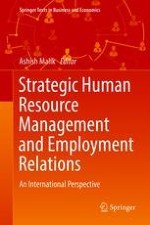2018 | OriginalPaper | Chapter
Managing Employee Voice
Author : Ashish Malik
Published in: Strategic Human Resource Management and Employment Relations
Publisher: Springer Singapore
Activate our intelligent search to find suitable subject content or patents.
Select sections of text to find matching patents with Artificial Intelligence. powered by
Select sections of text to find additional relevant content using AI-assisted search. powered by
Abstract
-
Define the terms employee voice, direct and indirect employee voice
-
Identify the reasons for differences in employee voice across geographical boundaries
-
Understand the theoretical basis for employee voice and employee participation
-
Evaluate the contribution of employee voice
